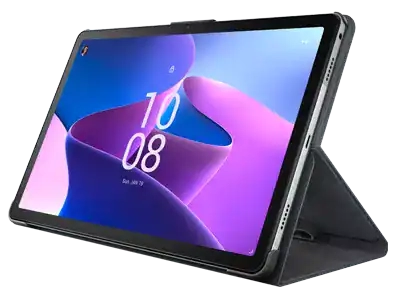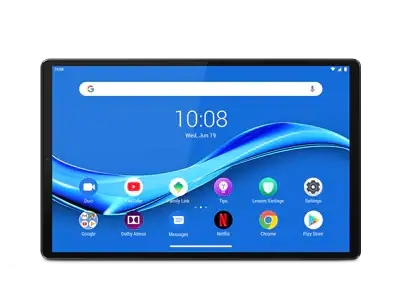Intel for Gaming
Besides good eyesight and fast-twitch muscles, there’s nothing more important to successful PC gaming than your computer’s processor or CPU. Some argue it’s the graphics support, since the game visuals control what each player sees, where they aim, and so on. But what good is all that if the CPU can’t keep up with the critical game input/output? The resulting lags and skips – or, worse, system crashes – can be a distinct disadvantage versus better equipped competitors.
Powerful Intel® Core™ processors – featured on dozens of Lenovo gaming laptops and gaming desktops – are a favorite of video gamers around the world. With multiple cores and fast clock speeds (and even faster Turbo Boost speeds) Intel Core CPUs deliver accelerated frame rates, high-resolution streaming and more. Whether you play entry-level games or today’s most complex and entertaining AAA titles, Intel processors can give you a winning edge. Best of all, these chips come in multiple variations, each with different features and price-points, so there’s an Intel Core processor for every game and game player.
Hard-core gamers, in particular, love Intel’s overclocking capabilities, which allow you to push a CPU beyond its normal performance limits. And while not every game utilizes multiple cores or relies on screaming-fast clock speeds, Intel products still rise to the top. Core-equipped Lenovo gaming systems feature all combinations of integrated or discrete graphics, from Intel and other companies. We also offer related Intel technologies (described below) that benefit game players, such as Intel® Optane™ memory and Intel® Wi-Fi 6 (Gig+).
Intel gaming desktops
Desktops, towers and cubes are the “original PCs,” and they still dominate the hyper-competitive gaming space. In fact, desktop gaming systems – including models with Intel Core processors – are among Lenovo’s best-sellers, and have been for years.
The larger frame of a desktop device allows manufacturers to use components with greater capabilities: bigger storage drives, more and different ports, and so on. The additional space within a desktop system also makes it easier to keep it cool, allowing the use of higher-performing processors whose heat output would be harder to dissipate in a smaller device.
Another advantage of a desktop gaming system? Compared to a comparably equipped gaming laptop, the desktop option will often cost less. They’re generally easier to upgrade, too, since accessing the interior of the device involves little more than loosening a few screws.
The Intel Core line is split into different sub-series – Intel Core i5, Intel Core i7, Intel Core i9, etc. – each offering greater performance characteristics than the last. Table 1 illustrates how Intel compares the gaming capabilities of selected 10th generation Core desktop CPUs. [The “H” at the end of the SKUs indicates that the core multipliers in each product are unlocked, allowing them to be overclocked under proper conditions. Learn more about Intel overclocking.]
Table 1: Intel CPU comparison for gaming desktops
| |
Intel Core
i9-10900K |
Intel Core
i7-10700K |
Intel Core
i5-10600K |
| Unlocked & overclockable |
Yes |
Yes |
Yes |
| Seamless AAA gaming |
Yes |
Yes |
Yes |
| Streaming |
Yes |
Yes |
Yes |
| Competitive gaming |
Yes |
Yes |
|
| Streaming & recording |
Yes |
Yes |
|
Lenovo gaming desktops with Intel processors
Competitive gamers value desktop PCs – both towers and cubes – for their ability to support today's fastest processors, best graphics, and other key components. Here are Lenovo's top-selling gaming desktops with Intel CPUs:
- Legion gaming towers: High-performance Legion towers feature top-rated CPUs, stunning lighting effects, and thermal cooling features.
- Legion gaming cubes: Decidedly different – with transparent panels, integrated handles and more – Legion cubes are the new face of gaming.
- IdeaCentre gaming desktops: For affordable gaming options, it's hard to beat our IdeaCentre desktops, with features for the whole family.
It's simple. Lenovo knows desktops. Lenovo knows gaming. And gamers know Lenovo.
Intel gaming laptops
Sometimes, only a mobile gaming laptop will suffice. Joining friends for all-night gaming binges, traveling to gaming competitions, mixing business and gaming – it’s all easier with an easily portable laptop, especially when it’s built by Lenovo with Intel technology inside.
Manufacturer’s find interesting and innovative ways to keep gaming laptops competitive with their desktop cousins. Mobile-specific CPUs are built to put off less heat while still delivering fast cycle times and frame rates. Special cooling features help dissipate heat even within the tight confines of a laptop frame. Long-lasting batteries with rapid-charging features make it possible to spend long hours gaming even while unplugged.
A high-performance gaming laptop might come with a higher price tag than a comparable desktop system, but the payoff is its take-anywhere mobility. And with Lenovo producing millions of laptops annually, including economy models, there’s a Lenovo gaming laptop for everyone.
As with its desktop CPUs, the Intel Core mobile processor family comes in different sub-series (Core i9, Core i7, Core i5, etc.). See Table 2 for Intel’s comparison of the gaming characteristics of some of its popular 10th generation Core CPUs. [All of the listed models are overclockable, as indicated by the “H” in each product SKU. Learn more about Intel overclocking.]
Table 2: Intel CPU comparison for gaming laptops
| |
Intel Core
i9-10980HK |
Intel Core
i7-10875H |
Intel Core
i7-10750H |
Intel Core
i5-10300H |
| AAA gaming |
Yes |
Yes |
Yes |
Yes |
| Streaming |
Yes |
Yes |
Yes |
Yes |
| Competitive gaming |
Yes |
Yes |
Yes |
|
| Streaming and recording |
Yes |
Yes |
Yes |
|
| Advanced content creation |
Yes |
Yes |
|
|
| Peak gaming performance |
Yes |
|
|
|
| Unlocked & overclockable |
Yes |
|
|
|
Lenovo gaming laptops with Intel processors
Why do on-the-go gamers shop at Lenovo? Because we've got a deep list of game-ready mobile systems with Intel CPUs and related technology – along with multiple graphics options – that can help lift you to new levels of performance and scoring:
- Legion gaming laptops: Top-rated Lenovo Legion laptops are built for gaming. Multiple unlocked CPU options and extreme cooling features will give you a winning edge.
- IdeaPad gaming laptops: Stylish and highly portable, IdeaPad laptops run the gamut. Choose from gaming models built for affordability, high performance, and more.
- Yoga gaming 2-in-1s: Innovative Yoga 2-in-1s aren't just flexible, they're powerful, too. Get great visuals, stunning sound and take-anywhere portability.
And don't forget: even our business-ready ThinkPad laptops can work for gaming -- if it's got the right components. With dozens of ThinkPad models to pick from, you'll be ready for work or play.
Intel technology for gamers
Of course, gaming success involves more than the processor. Here are some additional Intel products and technologies that are highly valued by today's gaming pros:
Faster game loads...
- Intel® Optane™ Memory: This smart memory technology speeds delivery of the data that matters most, so games launch (and jump to the right level) quickly, even from old-style, spinning HDDs. Optane-based SSDs are also available for even faster boot-ups and app loads.
Better streaming and wireless…
- Intel® Wi-Fi 6 (Gig+): Intel calls it "wired-quality wireless gaming," delivering nearly 3X faster Wi-Fi speeds and up to 75% less latency, plus advanced traffic management and interference filtering. The result? Remarkable wireless PC gaming and game streaming.1,2
One-cable video, data and power…
- Thunderbolt™ 3 and Thunderbolt™ 4: These reversible USB-C ports can carry 4K video, data and power – at the same time, over a single cable – with up to eight times the bandwidth of USB 3.0. Easily dock to multiple displays, peripherals, and storage.3
You see? For gamers, there’s much more to Intel than just its high-performance Core CPUs. The Intel influence stretches all the way to memory, wireless and ports.
Intel support for esports
Since 2006, the company has sponsored ESL's Intel® Extreme Masters pro gaming tour – now the longest-running esports series in the world. Players on multiple continents compete in Counter-Strike: Global Offensive, StarCraft II and League of Legends tournaments. Intel also backs ESL's Intel® Grand Slam challenge and, as of this writing, is a major supporter of additional ESL events including ESL One, the ESL National Championships and the DreamHack Masters.
Intel also works to help gamers gain exposure and find opportunities, including college scholarships. For example, in 2020, the company joined AVGL to sponsor Intel Inspires, a multi-day esports event that allowed top young players to show off their game skills to college recruiters, industry pros, and others.
1Nearly 3X Faster: 802.11ax 2x2 160 MHz enables 2402 Mbps maximum theoretical data rates, ~3X (2.8X) faster than standard 802.11ac 2x2 80 MHz (867 Mbps) as documented in IEEE 802.11 wireless standard specifications, and require the use of similarly configured 802.11ax wireless network routers.
275% Latency Reduction: Estimate is based on Intel simulation data (79%) of 802.11ax with and without OFDMA using nine clients. Average latency without OFDM is 36ms, with OFDMA average latency is reduced to 7.6ms. Latency improvement requires that the 802.11ax (Wi-Fi 6) router and all clients support OFDMA.
3As compared to other PC I/O connection technologies including eSATA, USB, and IEEE 1394 Firewire*. Performance will vary depending on the specific hardware and software used. Must use a Thunderbolt™-enabled device.
Intel, Intel Core, Intel Optane and Thunderbolt are trademarks of Intel Corporation or its subsidiaries in the U.S. and/or other countries.










































